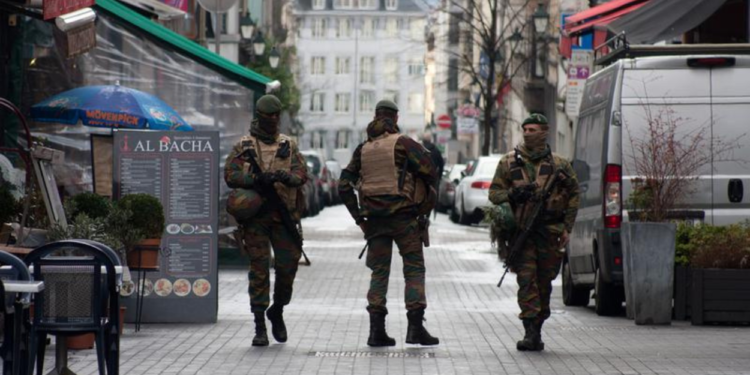Brussels (Brussels Morning) – OCAD’s update reveals a slight decrease in Belgium’s terrorist watch list but a rise in the average threat level, signalling evolving challenges.
The coordination Body for Threat Assessment (OCAD) of Belgium announced during a press conference that The number of names on Belgium’s terrorist watch list declined from 700 to 650 last year, but the average threat status of the people on the list grew slightly.
The ‘OCAD list’ includes the names of extremists and terrorists observed in Belgium with high priority. In 2023, some 80 names were withdrawn from the list, while about 30 were added. “A person is released from the list if they are discovered to have been evolving positively for a long time, and no new damaging elements emerge,” stated OCAD Director Gert Vercauteren. “This is not accomplished overnight. But if someone reintegrates sufficiently, they should be taken off the index. That is democracy.”
The drop is largely due to the easing of the Syria crisis, he stated. “This does not mean that the danger also automatically decreases. Our analysis indicates that the average threat posed by those on the list has risen slightly.”
The average threat level is estimated based on an individual threat analysis designed for each person on the list. It is too early to demonstrate a causal link, Vercauteren reported, but the average level might have increased because more people with very low ranks disappeared from the list than were added.
Analysis of Terrorist Profiles and Trends
Additionally, OCAD estimated more files with arrests in 2023 – peaking in the spring, and again in the autumn with the crisis in Gaza. In any case, the slight growth was not due to the addition of individuals subject to the very highest threat level, Vercauteren highlighted. The data further reveals that 88% of the individuals on the watch list come from jihadist principles, 9% are connected to right-wing extremism and 2% to left-wing extremism.
Most of the names on the index fall into the category of ‘foreign terrorist fighters’: people who departed for conflict zones to enter a terrorist group or had the purpose of doing so. Of the 426 people who fall in this classification, about one-third are abroad. About 190 of them are acknowledged to have died, Vercauteren expressed with caution. In practice, this indicates that the number of names in that category should decline further in the coming years, as more dead individuals are removed from the list.
There are also 40 additional homegrown terrorist fighters’ on the list (those who desire to commit terrorist actions in Belgium or support them) and 90 hate propagandists (who explain the use of violence for ideological purposes). Finally, there are 110 potentially fierce extremists, who have preferences to use brutality but have not yet taken substantial steps, and 23 terrorism detainees. “For these categories, we have achieved a plateau,” Vercauteren stated.
He could not reveal how many individuals on the list were encouraged by ISKP (Islamic State in the Khorasan Province), the terror party behind last week’s attack in Moscow. “But in regulation, it does not count to OCAD whether someone is motivated by ISKP, IS or Al-Qaeda. If they meet the criteria, any extremist can be included.”
The update from the Coordination Body for Threat Assessment (OCAD) sheds light on the evolving landscape of terrorist threats in Belgium. While the number of names on the terrorist watch list has decreased slightly, the average threat level of individuals on the list has risen, reflecting a nuanced and dynamic security situation.
The decline in numbers is attributed to various factors, including changes in the Syria crisis, while the increase in threat level underscores the persistent challenges posed by extremism. The data provided by OCAD underscores the ongoing need for vigilance and proactive measures to address diverse forms of extremism, highlighting the importance of continued coordination and diligence in safeguarding national security.




